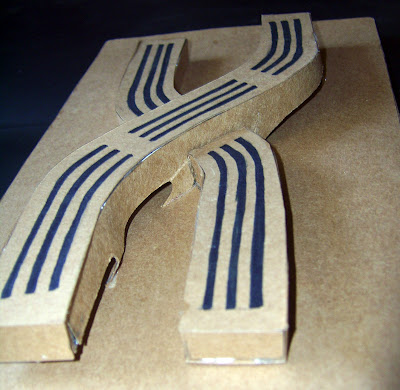
Wednesday 22 February 2012
Building Type: Living Museum
A living museum is a type of museum, in which historical events showing the life in ancient times are performed, especially in ethnographic or historical views, or processes for producing a commercial product in terms of technical and technological developments are shown, especially the craft. It is a type of museum that recreates to the fullest extent conditions of a culture, natural environment or historical period. Sometimes, a drama performing group of historical re enactment of historical scenes in historical buildings is considered as a living museum.
 |
| Milestones Living Museum, Basingstoke |
Proposed Museum Typology
The idea is to create a cultural living museum where visitors can get a flavor of various ethnic cultures which are the part of their time and space. They need to understand that their timeline is a cultural amalgamation of various other ethnic timelines.
 |
| Living Museum Typology |
DESIGN STRATEGIES
Dynamic Architecture
Dynamic Architecture is considered to be design involving time and motion. It is merely like Kinematic Architecture but the form is dynamic in nature.
 |
| Dynamic Architecture |
There are two approaches for creating dynamic architecture.
1. Motion
2. Animation
These two approached defines the form and circulation. Both approaches involve time but in different manner.
Motion
In this approach, the design is time based movement which involves the movement through kinetics where design modifies or transforms through intervals.
 |
| Motion |
Animation
In this approach, the design is animated form where user eye moves from one point to another. It is static in nature but involve time fragment for the animated form. The animated form is based on three principles: Sheering, Shifting and Rotating.
 |
| Animation |
Sheering Effect involves the change in the form. This effect is animated where form start transforming its shape. The change in the form is gradual and user eye can witness each fragment of the change.
 |
| Sheering Effect |
Shifting Effect involves the gradual axial movement of the design. The form starts transforming on X or Y axis. The shifting of the form creates in-between spaces.
 |
| Shifting Effect |
Rotating Effect involves the rotary motion of the form. This can be animated or kinetic in nature.
The rotation can be on X and Y axis and it will follow the animation.
 |
| Rotating Effect |
Dynamic Architecture can be static in nature but these three principles give the form of animation which can be read by user eye. The idea can transform a simple form to complex one.
SITE ANALYSIS
SITE
The selected site is near Korangi-Malir Road. It is a left over site due to the contours. The rain water gathers at the contours because of improper channels of water disposal. The idea is to use the contours and make site potential for the vicinity. The site has a mix land use near its vicinity. It is commercially active on the Korangi road where as the Qayumabad Housing is at the rear side. The site is accessible from all parts of the city and is near the link road of Creek Avenue. |
| The Site |
 |
| Location Plan |
 | ||||
Land Use Plan
|
CONCEPTUAL FRAMEWORK
The idea is find a blend between temporal dimension and spatial dimension. An individual person on a journey comes across different spaces and the intervals between these spaces are time based phase.
The journey of an individual
The Time and Space relation is based on activity and experience. The journey unfolds new spaces where user performs an activity which develops an experience.
The Time and Space Relation
The Beginning of Time
1. The soul has no definite space, it’s in the vacuum and no sense of time because it is eternal.
2. A soul enters in a Womb (space) and the journey begins…It is the beginning of time.
3. The soul takes form and covers distance in the womb. This distance is covered in a fixed time.
4. The body comes out of womb into its new home (space) and starts to experience.
5. The individual starts journey by interacting with other individuals and share spaces and time.
The beginning of Time
The Journey of Time and Space
Throughout our life we experience different space and the association gets stronger. Each phase of timeline makes us experience a definite space and for that phase we associate with that space. e.g.Childhood: School Adolescence: Office
The Journey of Time and Space
The Journey - Timeline
1. Person A and Person B starts a journey (timeline).
2. Both individuals interact and shared space-time.
3. Person C enters the timeline, person A and person C have common interest therefore they amalgamate their interest and person B diverts from that timeline.
 |
| The Journey -timeline |
The Phase of the timeline
Individuality
The timeline of Person A and timeline of Person B is separate with definite time and space.
Amalgamation
Person A interacts with Person B and their timeline starts amalgamating in a single timeline. They experience shared space and share time.
Unification
Both individuals are now experiencing a single timeline which is unified. Both can identify their essence in this unified timeline.
Fragmentation
Both individuals now get separated and experience their timeline but the both shared the essence of other due to unification.
 |
| The Phases of journey |
Subscribe to:
Posts (Atom)




































